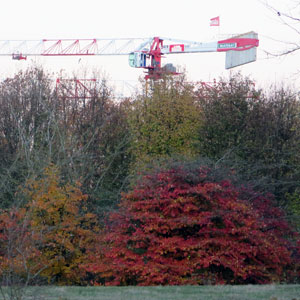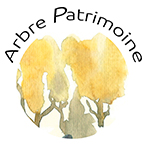Design office assistance
 Contact us before starting your building project.
Contact us before starting your building project.

We assist in the designing of development projects for architects, design offices, urban planners, building contractors, and landscape designers.
Why integrate a tree specialist in design?
Benefits brought by trees to cities are numerous and searched. However, when trees and infrastructure are called to coexist in a development project, a real challenge is posted.
Using a tree specialist will help you use trees as an asset in your landscaping projects.
How to put trees in the service of urban projects?

A tree specialist will assist you in anticipating potential conflicts between trees and infrastructure.
He can come in handy for both short and long-term projects.
On UPSTREAM: integrate some existing trees.
For this, it is necessary to:
- Include in pre-studies a diagnosis and inventory of existing trees. This is to preserve the large trees and to create a plan of tree servitude as soon as the program has been written.
- Preserve large trees or veteran trees on site. Studies proved they are more efficient regarding environmental benefits and visual impact on the landscape. For this, protective and accompanying measures must be defined to help minimising the impact of the project on trees.
- Take into account the water cycle (permeability at the foot of the tree), soil characteristics (variation of water regime, nutritional elements etc.) and the impact of changes for trees.
- Estimate the financial value of trees to be retained and report tree-related benefits.
- Take into account the surrounding urban forest (species, age, plantation style). Indeed, it may be necessary to integrate the need for species diversification into the design. It may be useful to identify invasive essences in order to promote the resilience of the global urban forest .
Choose the ‘right’ tree at the right place and include young plantations in global management.
For this, the tree-specialist can participate in:
- The planning of a sufficient rooting space for a rapid tree recovery and growth. He can define the treatment of the tree foot, the anchoring and support technique.
- choosing the ‘right tree at the right place’ to improve trees’ resistance to epidemics and pests. This means also improving biodiversity.
- Selecting the trees adapted to the context (positioning, spacing, and selection of species adapted to the current climate) from the nursery and ensuring a right age balance. This, while taking into account the desired effect of the different seasons (shape, colour, texture and seasonal variations of the tree).
- Anticipating management issues before finalising the plan for planting or protecting existing trees.
- Choosing disease-resistant species and planting styles that promote biodiversity in the city.
- Consulting the nursery. This includes taking into account the local species and species adapted to climate change, where the traceability of the plants is ensured. It also includes checking availability and the time of production in the timetable selected to pass the orders and providing delivery within the time frame of the project.
DURING the project, the tree specialist can ensure a follow-up and contribute to:
- Raising awareness, if necessary, of public works companies on environmental issues and possibly provide additional training on trees.
- Indicating the specifications and recommendations to be respected for the conservation of the selected trees and the method of calculating the penalties incurred.
- Checking compliance with tree protection measures and their efficacy.
- Ensuring the protection of trees and planting activities.
Finally AFTER building works, the tree specialist can provide a tree follow-up over the long term
We propose a long-term follow-up of the recovery of the trees transplanted, their care and tree management.

 (33)07 60 50 08 70
(33)07 60 50 08 70






